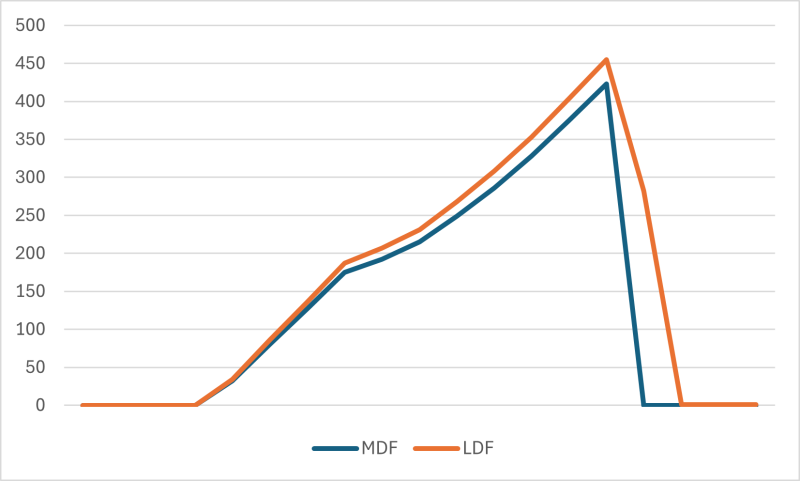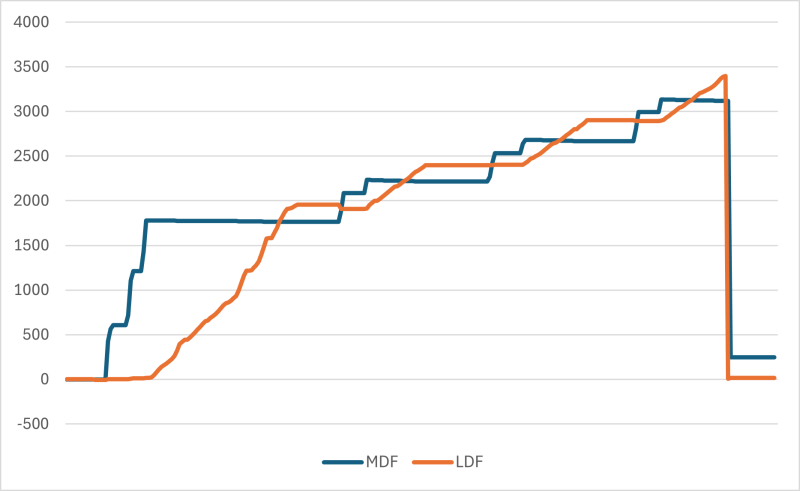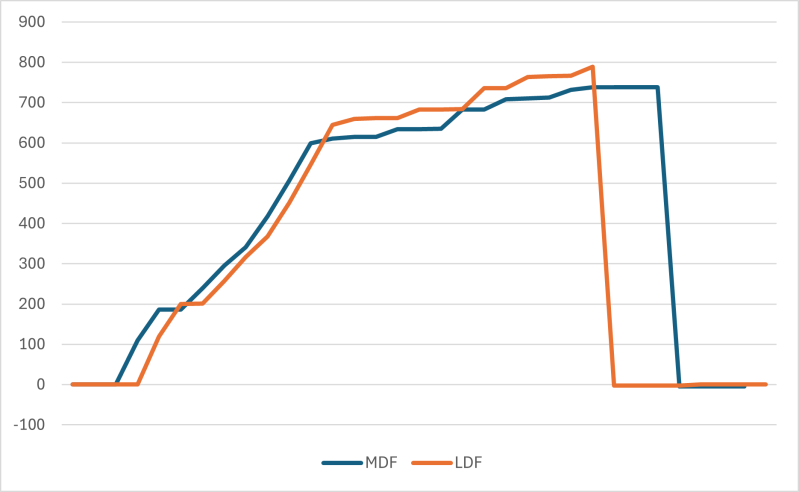Sql Server : Indexes rebuild tests
Here some tests I have done to better understand the behavior of indexes rebuild in SQL Server.
I used the database ContosoDataGeneratorV2 size “10M”. I added the extra table [Customer2] : it is a clone (structure+data) of [Customer]. It is not referenced by other tables and has 4 indexes on GeoAreaKey, GivenName, StartDT and EndDT.
Here’s the indexes involved in the tests (script at the end of the page for creating the report):
SchemaName TableName IndexName IndexType IndexSizeMB
-------------------------------------------------------------------------
Data Customer PK_Customer CLUSTERED 610.90
Data Sales IX_Sales_CustomerKey NONCLUSTERED 450.85
Data Sales IX_Sales_ProductKey NONCLUSTERED 450.85
Data Sales IX_Sales_StoreKey NONCLUSTERED 450.85
Data Sales PK_Sales CLUSTERED 1764.11
Data Customer2 IX_Customer2_EndDT NONCLUSTERED 27.67
Data Customer2 IX_Customer2_GeoAreaKey NONCLUSTERED 22.78
Data Customer2 IX_Customer2_GivenName NONCLUSTERED 48.52
Data Customer2 IX_Customer2_StartDT NONCLUSTERED 27.67
Data Customer2 PK_Customer2 CLUSTERED 612.78
I executed the testing queries Q1…Q12 measuring the space used on the MDF and LDF during the executions. To do that, I wrote a piece of C# to measure the MDF and LDF file usage. The database has been set to SIMPLE mode. The results are below.
| ID | Index (*) | Action | IndexSizeMB | UsedMDF_MB | UsedLDF_MB | FinalDeltaMDF |
|---|---|---|---|---|---|---|
| Q1 | IX_Sales_CustomerKey | REBUILD | 450 | 446 | 476 | 0 |
| Q2 | IX_Sales_StoreKey | REBUILD | 450 | 423 | 455 | 0 |
| Q3 | PK_Sales | REBUILD | 1764 | 1764 | 1886 | 0 |
| Q4 | PK_Sales | DROP | 1764 | 1120 | 1200 | -249 |
| Q5 | PK_Sales | ADD | 1764 | 3100 | 3400 | +249 |
| Q6 | (FK_Sales_Customers) | DROP | - | 0 | 0 | 0 |
| Q7 | PK_Customer | DROP | 610 | 0 | 0 | 0 |
| Q8 | PK_Customer | ADD | 610 | 610 | 660 | 0 |
| Q9 | (FK_Sales_Customers) | ADD | - | 0 | 0 | 0 |
| Q10 | PK_Customer | REBUILD | 610 | 593 | 637 | 0 |
| Q11 | PK_Customer2 | DROP | 610 | 132 | 120 | 0 |
| Q12 | PK_Customer2 | ADD | 610 | 738 | 789 | 0 |
Key findings:
- MDF space is used and then released at the end of the operation.
- LDF space is released if database is in SIMPLE recovery mode. ⚠
- Rebuilding an index requires the double of the space of the index itself.
- Dropping a clustered index requires the double of the space of the other indexes.
- Adding a clustered index requires the size of the heap table plus all the other indexes.
- To stay safe, add at least 25%-50% to the value you calculate.
Some charts
Below some charts that highlight the variation of MDF and LDF files during the execution of the commands.
Q2

Q5

Q12

Scripts
Testing commands
CHECKPOINT
GO
-- Q1
--ALTER INDEX [IX_Sales_CustomerKey] ON [Data].[Sales] REBUILD PARTITION = ALL WITH (PAD_INDEX = OFF, STATISTICS_NORECOMPUTE = OFF, SORT_IN_TEMPDB = OFF, ONLINE = OFF, ALLOW_ROW_LOCKS = ON, ALLOW_PAGE_LOCKS = ON)
-- Q2
--ALTER INDEX [IX_Sales_StoreKey] ON [Data].[Sales] REBUILD PARTITION = ALL WITH (PAD_INDEX = OFF, STATISTICS_NORECOMPUTE = OFF, SORT_IN_TEMPDB = OFF, ONLINE = OFF, ALLOW_ROW_LOCKS = ON, ALLOW_PAGE_LOCKS = ON)
-- Q3
--ALTER INDEX [PK_Sales] ON [Data].Sales REBUILD PARTITION = ALL WITH (PAD_INDEX = OFF, STATISTICS_NORECOMPUTE = OFF, SORT_IN_TEMPDB = OFF, ONLINE = OFF, ALLOW_ROW_LOCKS = ON, ALLOW_PAGE_LOCKS = ON)
-- Q4
--ALTER TABLE [Data].[Sales] DROP CONSTRAINT [PK_Sales] WITH ( ONLINE = OFF )
-- Q5
-- ALTER TABLE [Data].[Sales] ADD CONSTRAINT [PK_Sales] PRIMARY KEY CLUSTERED ([OrderKey] ASC,[LineNumber] ASC ) WITH (PAD_INDEX = OFF, STATISTICS_NORECOMPUTE = OFF, SORT_IN_TEMPDB = OFF, IGNORE_DUP_KEY = OFF, ONLINE = OFF, ALLOW_ROW_LOCKS = ON, ALLOW_PAGE_LOCKS = ON, OPTIMIZE_FOR_SEQUENTIAL_KEY = OFF) ON [PRIMARY]
-- Q6
-- ALTER TABLE [Data].[Sales] DROP CONSTRAINT [FK_Sales_Customers]
-- Q7
-- ALTER TABLE [Data].[Customer] DROP CONSTRAINT [PK_Customer] WITH ( ONLINE = OFF )
-- Q8
-- ALTER TABLE [Data].[Customer] ADD CONSTRAINT [PK_Customer] PRIMARY KEY CLUSTERED ([CustomerKey] ASC ) WITH (PAD_INDEX = OFF, STATISTICS_NORECOMPUTE = OFF, SORT_IN_TEMPDB = OFF, IGNORE_DUP_KEY = OFF, ONLINE = OFF, ALLOW_ROW_LOCKS = ON, ALLOW_PAGE_LOCKS = ON, OPTIMIZE_FOR_SEQUENTIAL_KEY = OFF) ON [PRIMARY]
-- Q9
-- ALTER TABLE [Data].[Sales] WITH NOCHECK ADD CONSTRAINT [FK_Sales_Customers] FOREIGN KEY([CustomerKey]) REFERENCES [Data].[Customer] ([CustomerKey])
-- ALTER TABLE [Data].[Sales] CHECK CONSTRAINT [FK_Sales_Customers]
-- Q10
-- ALTER INDEX [PK_Customer] ON [Data].[Customer] REBUILD PARTITION = ALL WITH (PAD_INDEX = OFF, STATISTICS_NORECOMPUTE = OFF, SORT_IN_TEMPDB = OFF, ONLINE = OFF, ALLOW_ROW_LOCKS = ON, ALLOW_PAGE_LOCKS = ON)
-- Q11
-- ALTER TABLE [Data].[Customer2] DROP CONSTRAINT [PK_Customer2] WITH ( ONLINE = OFF )
-- Q12
-- ALTER TABLE [Data].[Customer2] ADD CONSTRAINT [PK_Customer2] PRIMARY KEY CLUSTERED (CustomerKey,GeoAreaKey) WITH( STATISTICS_NORECOMPUTE = OFF, IGNORE_DUP_KEY = OFF, ALLOW_ROW_LOCKS = ON, ALLOW_PAGE_LOCKS = ON) ON [PRIMARY]
GO
CHECKPOINT
GO
Show index size
SELECT
sc.name AS SchemaName,
t.name AS TableName,
i.name AS IndexName,
i.type_desc AS IndexType,
SUM(s.used_page_count) * 8 / 1024.0 AS IndexSizeMB
FROM sys.dm_db_partition_stats AS s
JOIN sys.indexes AS i ON s.[object_id] = i.[object_id] AND s.index_id = i.index_id
JOIN sys.tables AS t ON s.object_id=t.object_id
JOIN sys.schemas AS sc ON sc.schema_id = t.schema_id
GROUP BY
sc.name,t.name,i.name,i.type_desc
ORDER BY
sc.name,t.name,i.name,i.type_desc